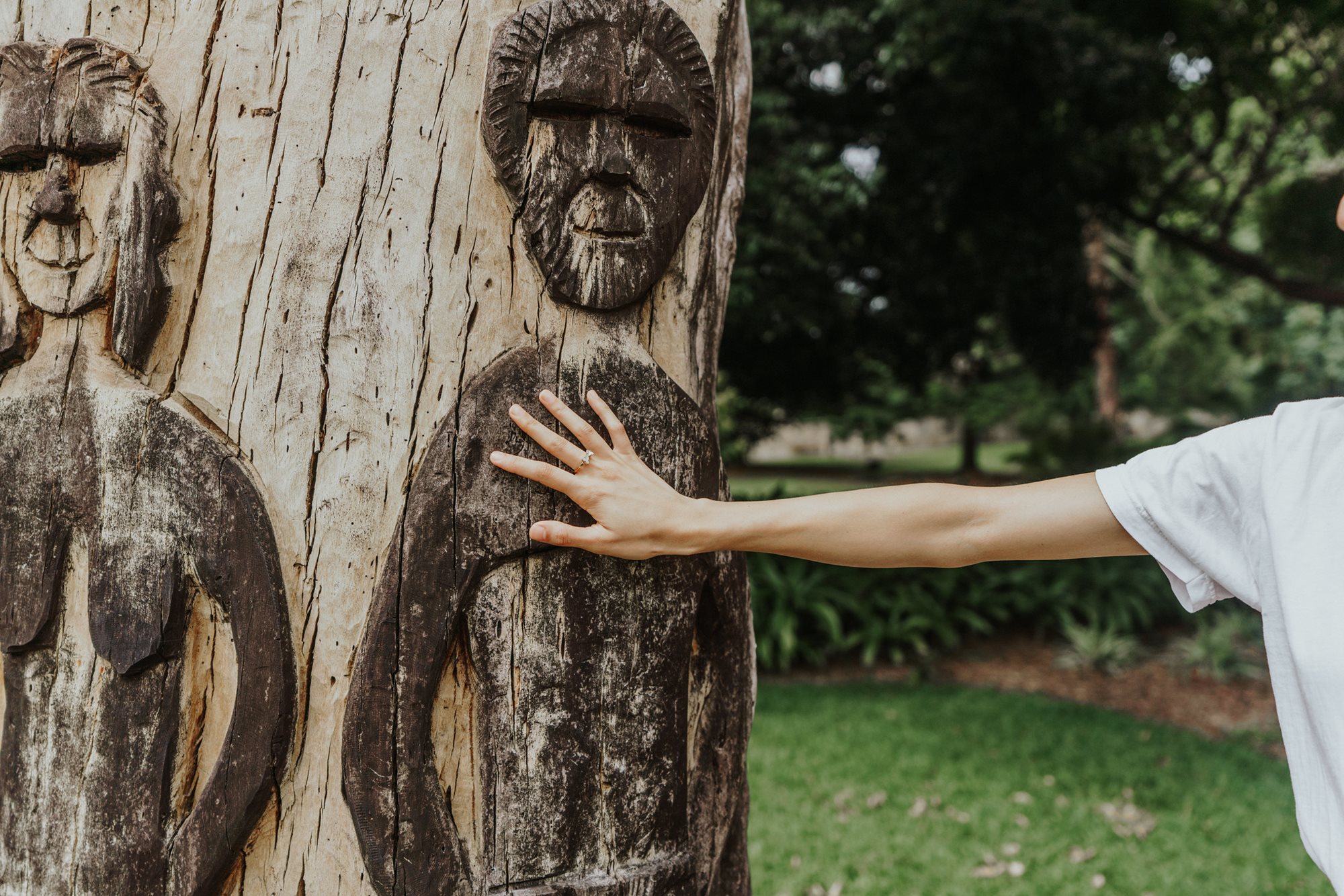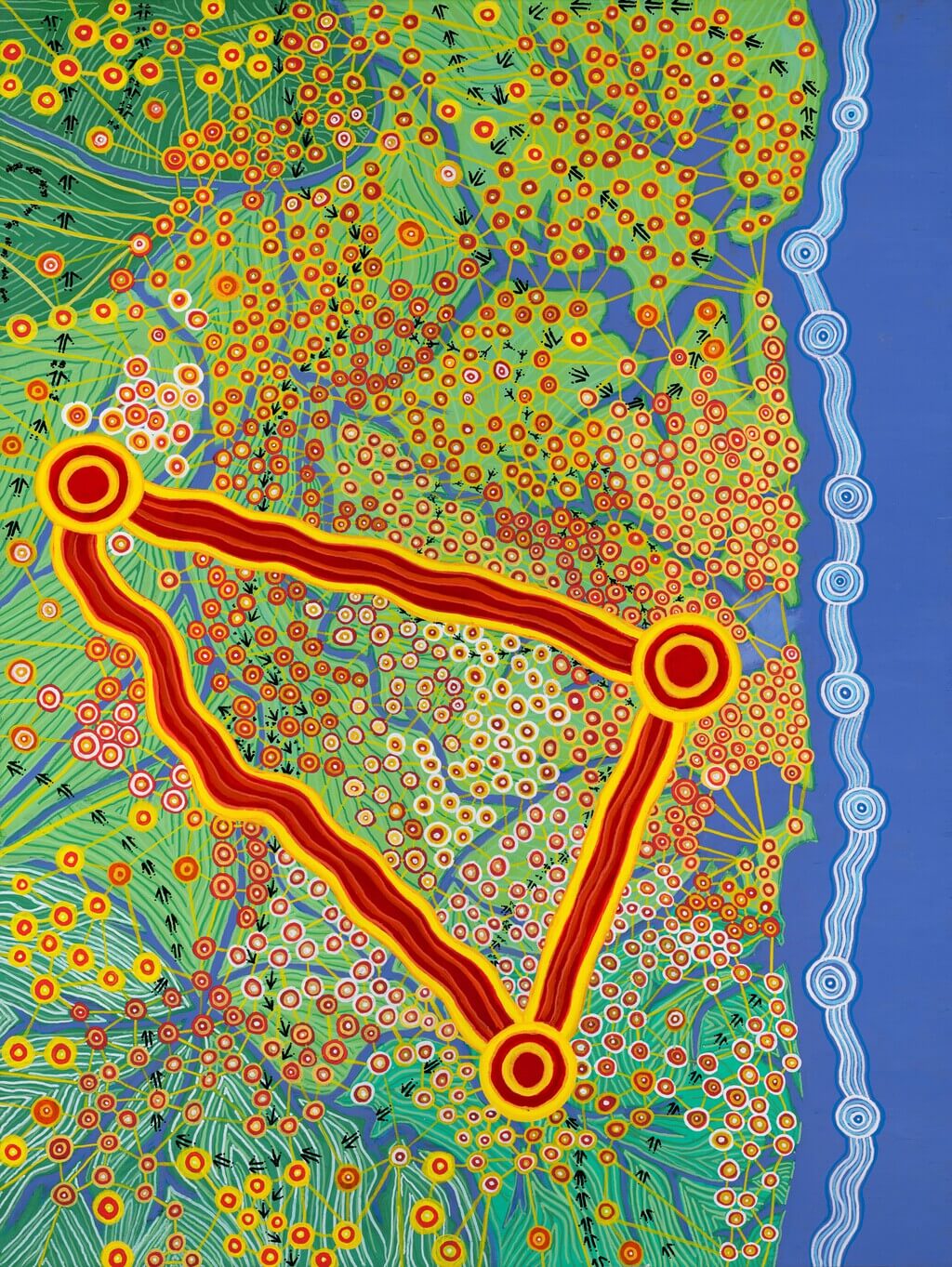First Nations Engagement Strategy and Reconciliation Action Plan
Our Engagement Strategy and Reconciliation Action Plan is a pledge to work with Aboriginal and Torres Strait Islander peoples, organisations and communities to help build prosperity and security for the future.

Take action with us
Botanic Gardens of Sydney aspires to be a leading organisation for embedding Aboriginal and Torres Strait Islander cultural protocols, knowledge and perspectives in all aspects of our activities.
Our Reconciliation Action Plan was developed with our staff, local communities and Reconciliation Australia. It follows Reconciliation Australia’s well-established themes of relationships, respect and opportunities, which provide a roadmap for implementing lasting change.
Our plan will help us be a place where everyone feels included and respected for who they are, and where diversity is celebrated. It will also help us foster positive workplace cultures and authentic, consistent community engagement.
We hope to draw on the diversity of thought, experience and knowledge by inviting like-minded organisations, communities and individuals to join us by sharing information, identifying challenges and helping us achieve innovative solutions. Everyone is welcome and encouraged to take action with us.
First Nations Engagement Strategy & Reconciliation Action Plan

Connections by Darren Charlwood
November 2020, acrylic on recycled plywood.
Connections was created with the work of Botanic Gardens of Sydney in mind. It tells the story of the impact and influence of the Botanic Gardens throughout the community over the years.
The connections depicted in the artwork portray the locations where the various programs run by the Botanic Gardens have had the greatest impact, along with the various language groups - the Gadigal, Dharawal and Darug peoples - who are the traditional owners of these areas. These sites are all interconnected through the Aboriginal practice of shared knowledge and this knowledge is coming from the four sites which make up the Botanic Gardens - Royal Botanic Garden Sydney, The Domain Sydney, Australian Botanic Garden Mount Annan and Blue Mountains Botanic Garden Mount Tomah.
The painting was created as part of the Botanic Gardens’ Reconciliation Action Plan and it aims to highlight the need for a restored equity, dignity and respect for Aboriginal environmental knowledge and management practices. These practices have been incorporated into the programs run by the Botanic Gardens and are regularly passed on to the public in the hopes of providing knowledge and inspiration.
The use of the colours yellow and red signify the colours of the landscape, which for thousands of years has been the life force and home of the various language groups of the Sydney area.
The waterways of the Sydney area are highlighted in the painting, particularly the coast, as these are of particular significance to Aboriginal people. The sites marked along the coast are those known sites which contain carvings made by the ancestors and which hold Dreamings that run through the country.
These sites stand like guardians along the coast, reminding us that we are on Aboriginal land. It always was and it always will be Aboriginal land.
About Darren
Darren Charlwood, a Wiradjuri man from the Yibaay Wagaan kin group, is a contemporary Aboriginal artist and member of the Boomalli Aboriginal Artist Co-op. He is also a cultural educator and ranger for the NSW Government.
Darren’s art is a response to the way in which the urban environment has been manipulated and changed by society in a manner that is not consistent with Aboriginal values.
His work is reflected in the word and philosophical approach of “Yindiyamarra” from the Wiradjuri language, which describes a balance, a gentle respect.
Botanic Gardens of Sydney acknowledges the traditional custodians of the lands on which we work.
We pay our respects to the Elders past, present and future for they hold the memories, the culture and dreams of Aboriginal and Torres Strait Islander Peoples.
We recognise and respect their cultural heritage, beliefs and continual relationship with the land, and we recognise the importance of the young people who are our future leaders.
